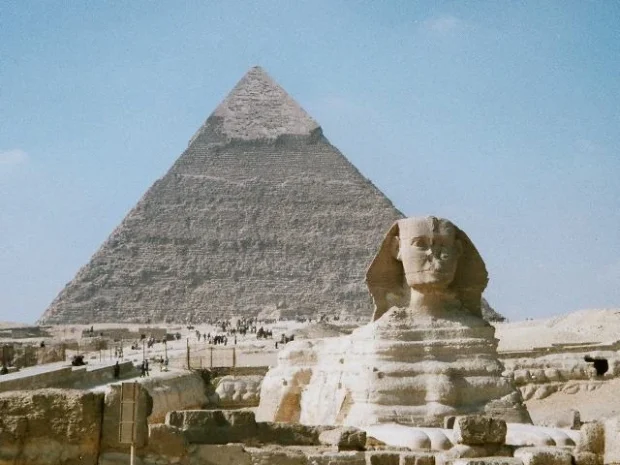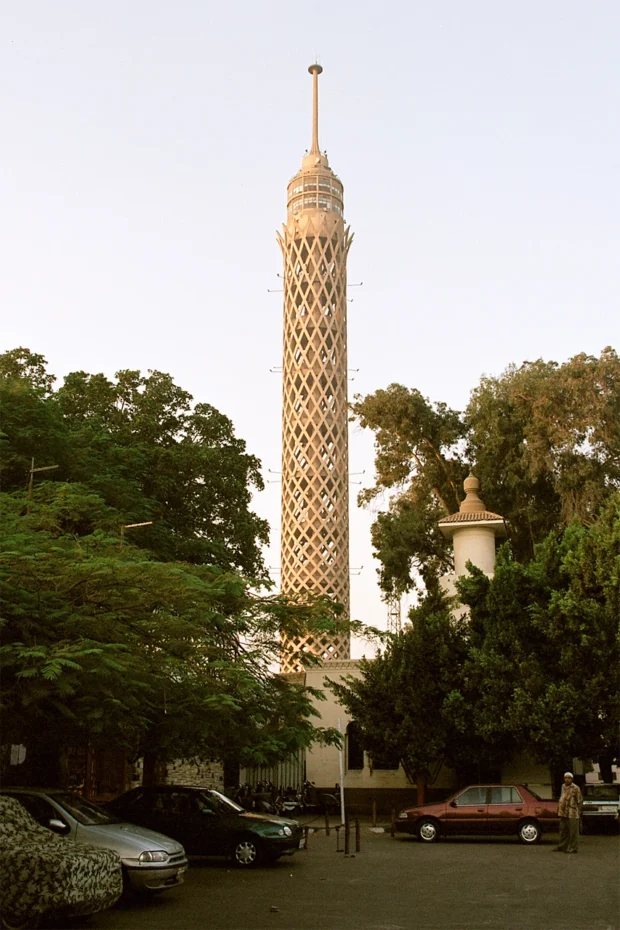Cairo is a city full of life, history, and colors. When you think of Egypt, most people imagine the giant pyramids and desert sands. But Cairo is many things at once: a bustling city, a place where old meets new, and where stories from thousands of years ago still whisper in the air. From walking in crowded markets to tasting spicy street food, Cairo offers a world that feels like a time machine and a movie set all in one.
Table of Contents

Coming to Cairo means stepping into a mix of sounds and smells. You hear honking horns, the calls of sellers from market stalls, and at night, the quiet murmur of the Nile River. The air smells of fresh bread from bakeries and spices from tiny shops hidden in alleys. If you want to know what it really means to live in an ancient city that never stops moving, Cairo is your spot.

Main Landmarks That Tell Cairo’s Story
When I first arrived, the pyramids of Giza were the star attraction everyone talked about. These huge stone triangles have stood tall for over 4,500 years. Standing in front of the Great Pyramid, you feel very small and yet connected to history. Nearby, the Sphinx guards the secrets of the past, watching visitors with its calm lion’s face.
Just a short trip from Cairo’s busy streets, the Great Sphinx stands as a timeless sentinel near the pyramids. After visiting central landmarks, learn practical ways to reach this majestic statue and what to expect around it by reading about the Great Sphinx in Cairo.

But Cairo is not only about pyramids. The Egyptian Museum downtown is a treasure chest of ancient objects. Walking among golden masks, old statues, and dusty scrolls gave me a real feeling of touching the lives of pharaohs. There’s one curious thing: the museum has some treasures that still remain hidden or unclear, like the unexplained curse stories visitors whisper about.
For travelers interested in historic treasures beyond Egypt, the British Museum in London offers a vast collection of artifacts from around the world, including fascinating objects from ancient Egypt.

Another place to visit is the Citadel of Saladin. From its fortress walls, you can see a wide view of the city’s roofs and minarets. Inside, the Mosque of Muhammad Ali shines with a bright white dome and delicate decorations. I noticed how locals come here for both prayer and quiet moments, blending history with daily life.

Markets and Neighborhood Charm
If you want to feel the heart of Cairo, the Khan El Khalili bazaar is a must. This market is a maze of narrow lanes filled with shops selling jewelry, spices, fabrics, and souvenirs. The air here is heavy with smells of coffee and incense. I spent hours just watching shopkeepers calling to customers and sharing stories about old Cairo. Some shops have been run by families for generations.

Less busy but just as enchanting is the neighborhood of Zamalek, located on an island in the Nile. It feels calmer and greener, with cozy cafés and quiet streets. I remember sitting in a small coffee shop, chatting with a local artist who told me how this area is the city’s creative spot.

Tasting Cairo: Food and Where to Enjoy It
Food in Cairo is a mix of flavors and traditions. On almost every corner, you will find street vendors selling falafel, called ta’ameya here, made from fava beans. It’s crunchy outside and soft inside, often served in pita bread with salad. Another popular dish is koshari, a filling plate of rice, lentils, pasta, and a spicy tomato sauce. Trying koshari in a simple, family-run restaurant in downtown Cairo felt like tasting the city itself.

If you wander around the Khan El Khalili area, look for small places serving fresh dates and sweet baklava, a layered pastry with honey and nuts. I learned that Egyptians love to share food, so if you’re invited, accept. Also, don’t miss drinking tea or hibiscus juice (called karkadeh) while sitting outside and watching life flow by.

Getting Around Cairo Like a Local
Arriving from Cairo International Airport, the city center is about 30 kilometers away. The airport bus is an easy way to reach central Cairo. Inside the city, the metro system is a fast and cheap way to move through the needed parts. It can get very crowded at rush hour, but it’s an adventure on its own – people chatting, vendors walking through, and glimpses of daily life beside the tracks.

Walking is great for small areas like Zamalek or the old city, but be ready for sudden crowds and noisy streets. Avoid riding in private cars or taxis planned by strangers for safety. If you want to try local transport, minibuses and microbuses are common but can feel confusing at first. Don’t hesitate to ask locals for help; most are friendly and enjoy sharing directions.

Cairo Culture and How to Blend In
Cairo has a long, rich culture shaped by religion, history, and daily life. When you meet people, it’s polite to greet with “Salam” (peace). Many Egyptians are warm and open, but respect matters a lot. For example, dress modestly when visiting religious sites-covering shoulders and knees is appreciated.

A little tip: don’t photograph people, especially women, without asking first. Egyptians value privacy. Also, avoid raising your voice or showing anger publicly; a calm attitude goes a long way. Dining with locals? Try to eat with your right hand only; the left is considered unclean in traditional settings.

During my stay, I noticed how tea drinking is not just a drink but a social ritual. Invited to a local home, I joined a circle where stories and jokes mixed with strong, sweet tea. It felt like a warm invitation to the soul of Cairo.

Curious Stories and Odd Finds
Have you ever heard of the “City of a Thousand Minarets”? Cairo’s skyline is dotted with more than a thousand mosques, many centuries old. Each minaret seems to have its own story, calling people to prayer five times a day. Standing near one at sunset, I felt the city’s heartbeat slow down for a moment.

Something funny I learned is that Cairo sometimes feels like a movie set where everything is real and acted at the same time. A local seller once joked with me that the call to prayer is Cairo’s original ringtone, waking people up daily. I laughed but realized there’s truth in that.
For those who like odd finds, visit the Museum of Islamic Art. It has strange and beautiful objects like old clocks that don’t tick and copper lanterns shaped like stars. Walking there, I imagined how each piece traveled through the hands of countless people over centuries.
Where to Rest After Busy Days
Cairo offers many places to stay, from quiet guesthouses to lively neighborhoods full of cafés and music. Areas near the Nile feel fresher and have great views at sunset. Downtown is vibrant but noisy, perfect if you want to be in the middle of things. Zamalek, with its calmer streets and green spaces, is good for longer stays or just resting after a busy day of walking and sightseeing.
Most places have friendly hosts who love to share local tips and sometimes invite guests to events or small tours. I found that staying in family-run guesthouses gave me a chance to understand real life in Cairo rather than just visiting as a tourist.
After exploring Cairo’s rich history and lively streets, you might want to explore Alexandria’s Pompey’s Pillar, which offers a glimpse into Roman Egypt and a different coastal vibe.
One last note: Cairo is a city of contrasts. Modern cars zoom past ancient ruins. Young people laugh on their smartphones while old men play chess in parks. Take your time, enjoy the chaos, and remember that each moment here is a story.
With its rich history, strong culture, and lively streets, Cairo leaves a mark on every visitor. Pack your curiosity and open heart, and this city will share its endless tales with you.

A digital nomad exploring cities across the globe, with a passion for local street food and hidden cafes.
- Egypt.Giza.Sphinx.01 by en:User:Hajor on Wikimedia Commons – cc by-sa 3.0
- Facade of the Egyptian Museum, Tahrir Square, Cairo, Egypt1 by Diego Delso on Wikimedia Commons – cc by-sa 3.0
- Khan el-Khalili 2019 1 by Mohammed Ali Moussa on Wikimedia Commons – cc by-sa 4.0
- Flickr – HuTect ShOts – Citadel of Salah El.Din and Masjid Muhammad Ali قلعة صلاح الدين الأيوبي ومسجد محمد علي – Cairo – Egypt – 17 04 2010 (4) by Ahmed Al.Badawy from Cairo, Egypt on Wikimedia Commons – cc by-sa 2.0
- Al-Azhar Mosque, Cairo, Egypt9 by Diego Delso on Wikimedia Commons – cc by-sa 3.0
- Cairo, Shopping street, Egypt by Vyacheslav Argenberg on Wikimedia Commons – cc by 4.0
- St. George, greek coptic church, Old Cairo, Egypt2 by Diego Delso on Wikimedia Commons – cc by-sa 3.0
- The Citadel Mosque, Cairo, Egypt by RyansWorld on Wikimedia Commons – cc by-sa 3.0
- CairoIslamicMuseum by Roland Unger on Wikimedia Commons – cc by-sa 3.0
- Complex of Al Sultan Al Zahir Barquq 010 by mohamed saleh on Wikimedia Commons – cc by-sa 4.0
- Nile river at Luxor by Mohammed Moussa on Wikimedia Commons – cc by-sa 4.0
- Zamalek Arial by Abdallah (talk) on Wikimedia Commons – cc by-sa 3.0
- Tahrir Square on January 25 2012 by Gigi Ibrahim from Cairo, Egypt on Wikimedia Commons – cc by 2.0
- Kairo Hanging Church BW 1 by Berthold Werner on Wikimedia Commons – cc by-sa 3.0
- CairoBenEzra by Roland Unger on Wikimedia Commons – cc by-sa 3.0
